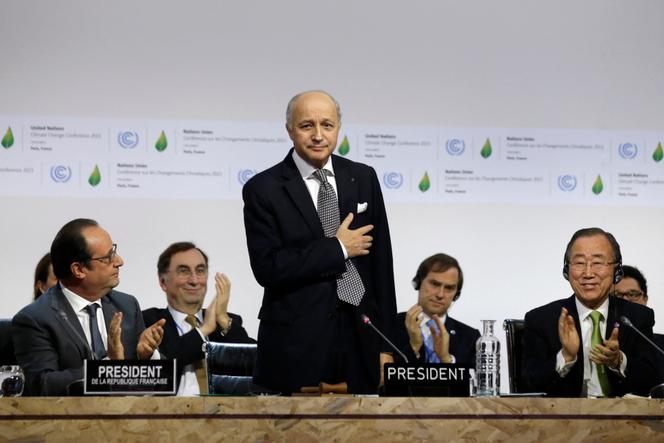


Some negotiators talk about a "red thread" guiding the negotiations. Others speak of a "black cloud" hanging over the 28th Conference of the Parties to the UN Framework Convention on Climate Change (COP28 of the UNFCCC) being held in the United Arab Emirates from November 30 to December 12. The Paris Agreement, established at COP21 in 2015, stands as the greatest success of climate diplomacy but also a reference point for national policy failures. Its resonance will haunt the corridors of Dubai. The 196 parties that shared a triumph eight years ago are now at a crossroads.
In Paris, they pledged to limit the rise in temperature to "below 2°C" and, if possible, to 1.5°C by the end of the century. The most recent trajectories are still predicting a warming of 2.5°C to 2.9°C. Efforts are falling short of expectations. "At this COP, we will finally get to the bottom of the iceberg and see the gaps between commitments and policies implemented," summed up Lola Vallejo, climate program director at the Institute for Sustainable Development and International Relations (IDDRI), a think tank based in Paris.
In Dubai, governments will have to walk a tightrope. On the one hand, there are the bleak findings of scientists. For several weeks now, reports from the UN, the International Energy Agency, NGOs and scientific groups have been pouring in, based on the latest data or the sixth assessment report of the Intergovernmental Panel on Climate Change (IPCC). They all point to the gap between the geophysical reality of the atmosphere and the curves predicted by the Paris Agreement.
They are all calling for stronger plans to mitigate the greenhouse gas emissions responsible for global warming. The latest call, in the United Nations Environment Programme's "Emissions Gap Report", published on Monday, November 20, indicates that they need to fall by 42% by 2030 – the only way to get back on track for +1.5°C. The peak has still not been reached, however, as emissions rose by a further 1.2% between 2021 and 2022.
On the other hand, governments are faced with a mountain of reforms needed to save the 2015 agreement. Article 14 of the agreement provides for a review in 2023, and then every five years. This global stocktake will be presented at the COP. For over a year, dozens of experts have been hard at work compiling thousands of documents.
When the technical report on this global assessment was published on September 8, the UNFCCC also put pressure on its party states. "Global emissions are not in line with modelled global mitigation pathways consistent with the temperature goal of the Paris Agreement," according to this report. "The presentation of the global stocktake will undoubtedly be the pièce de résistance of this conference," said Vallejo. "That's because the conclusion of these discussions could have a major influence on the next contributions of the States."
You have 60% of this article left to read. The rest is for subscribers only.
